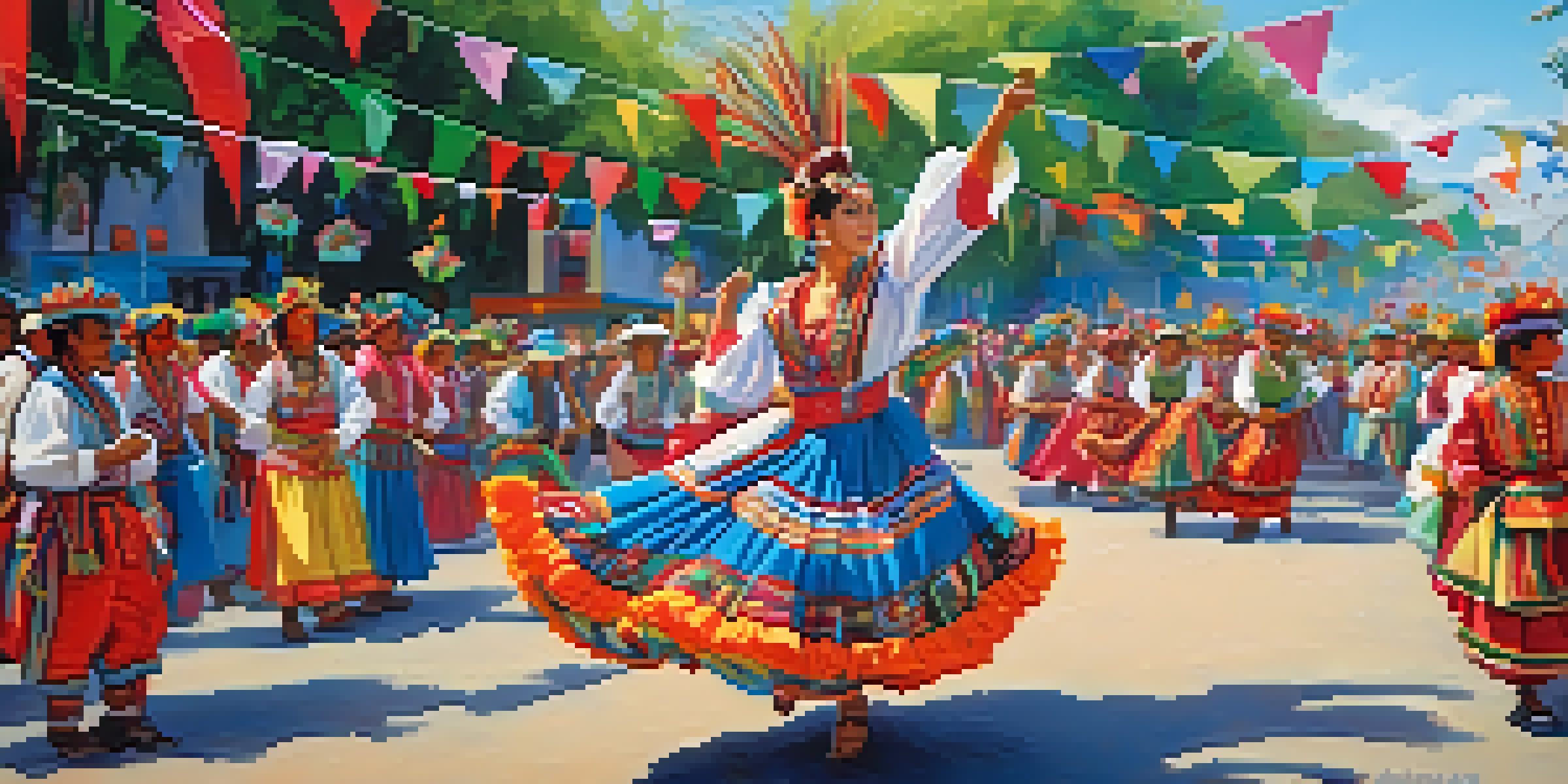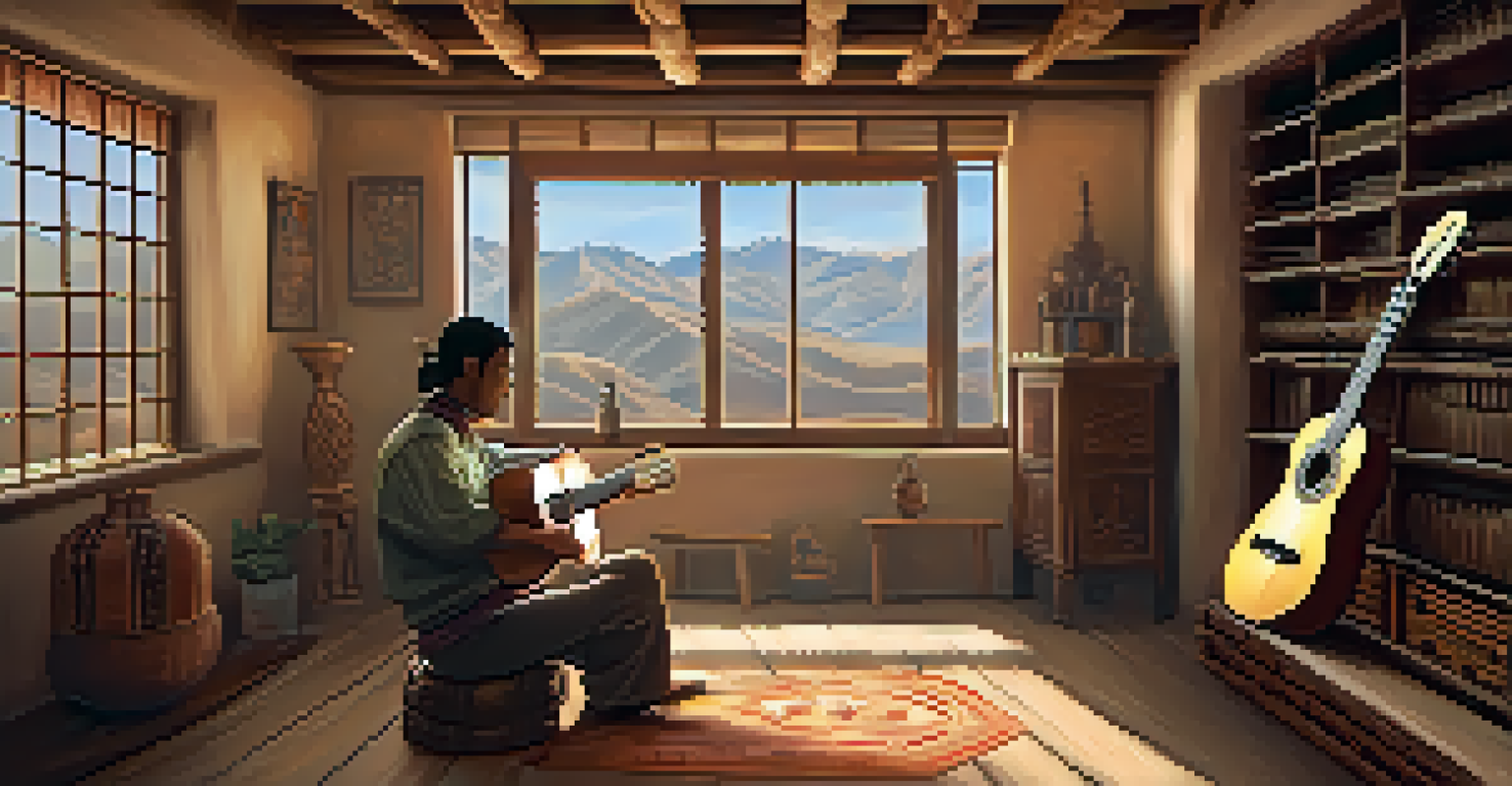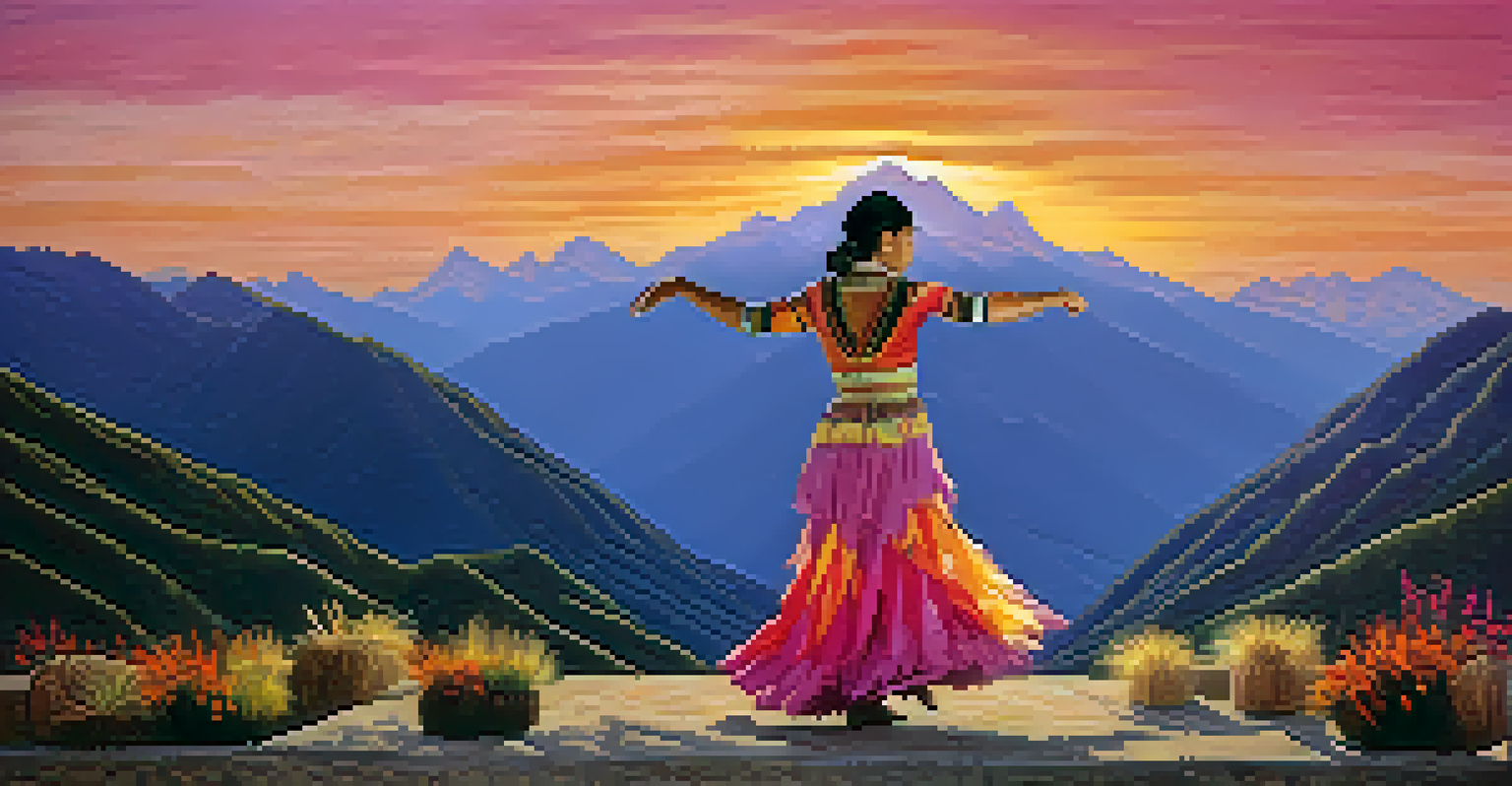Music and Dance: The Heartbeat of Peruvian Folklore

Introduction to Peruvian Folklore: A Vibrant Heritage
Peruvian folklore is like a colorful tapestry, weaving together the country’s diverse cultures and traditions. From the Andes to the Amazon, every region boasts its own unique stories and rhythms. Music and dance act as the heartbeat of these traditions, bringing communities together and celebrating their heritage.
Music can change the world because it can change people.
In Peru, folklore isn't just about the past; it’s a living expression of identity and pride. Festivals often showcase these vibrant art forms, inviting both locals and tourists to engage in the festivities. This cultural richness is deeply rooted in the history of the indigenous peoples and later influences from Spanish colonization.
As you explore the sounds and movements of Peruvian folklore, you’ll find a world where every note tells a story and every dance step embodies emotion. This article will delve into the significance of music and dance in shaping the Peruvian cultural landscape.
The Role of Music in Peruvian Folklore
Music in Peruvian folklore serves as a powerful medium for storytelling, often reflecting historical events and social issues. Instruments like the charango, a small guitar-like instrument, and the cajón, a box-shaped drum, create distinct sounds that resonate with the spirit of the Andes. Each region has its own musical style, from the lively huaylas of the highlands to the enchanting marinera of the coastal areas.

These musical styles are often accompanied by lyrics that speak to the struggles and joys of everyday life. For instance, the songs of the Andes may celebrate the beauty of the mountains or the hardships faced by the peasant communities. This connection creates a deep emotional resonance, allowing listeners to feel the pulse of their cultural history.
Music as Cultural Storytelling
Peruvian music serves as a powerful medium for storytelling, reflecting the nation's history and social issues through diverse regional styles.
Moreover, music acts as a bridge between generations, preserving traditions while inviting new interpretations. Young musicians are inspired to innovate, blending traditional sounds with modern influences, ensuring that Peruvian folklore remains relevant in today's world.
Dance: The Movement of Cultural Expression
Dance in Peruvian folklore is a vibrant manifestation of cultural expression, showcasing the rich diversity of the country. Each dance tells a story, whether it's the joyous celebration of love in the marinera or the solemnity of the cultural rituals in the Amazon. The costumes worn during these dances are often as colorful and intricate as the movements themselves.
Dance is the hidden language of the soul.
The act of dancing is communal, inviting participation from everyone, regardless of age or skill level. During festivals, you’ll find families and friends joining hands, creating an atmosphere of unity and joy. This sense of community is a vital aspect of Peruvian culture, reminding us that dance is not just about the performance but the shared experience.
Additionally, dance serves as a means of cultural preservation, passing down traditions through generations. As younger dancers learn from their elders, they not only keep the stories alive but also adapt them, ensuring that the spirit of Peruvian folklore continues to thrive.
Regional Variations: A Kaleidoscope of Styles
Peru's vast geography contributes to an incredible diversity in its music and dance styles. From the coastal regions to the highlands and the jungle, each area has its own unique rhythms and movements. For example, the Afro-Peruvian music from the coast features energetic beats and call-and-response singing, highlighting the African influence in its culture.
In contrast, the Andean music is characterized by wind instruments like the pan flute and the siku, which create harmonious melodies that echo the mountains. Dances such as the diablada, from Puno, often incorporate theatrical elements, depicting the battle between good and evil, showcasing a rich narrative tradition.
Dance Unites Communities
Dance in Peru fosters community spirit, inviting people of all ages to participate in celebrations that embody cultural expression and unity.
This regional diversity is not just a matter of style but also reflects the history and anthropology of the people. Understanding these variations helps us appreciate the broader narrative of Peru’s cultural identity, revealing how geography, history, and community shape the arts.
Festivals: The Celebration of Music and Dance
Festivals are the heartbeat of Peruvian folklore, where music and dance come alive in vibrant displays of cultural pride. Events such as Inti Raymi, celebrated in Cusco, honor the Inca sun god with elaborate processions and traditional music. This festival not only brings together locals but also attracts tourists eager to witness the spectacle.
During these festivals, the streets are filled with colorful costumes, lively music, and enthusiastic dancers, creating an atmosphere of joy and celebration. The community comes together to showcase their heritage, allowing participants to connect with their roots and share their culture with others.
These gatherings also serve as a platform for cultural exchange, where traditional practices can adapt and evolve. As new generations engage with their heritage, they infuse fresh ideas, ensuring that the spirit of Peruvian folklore remains dynamic and alive.
The Influence of Globalization on Peruvian Folklore
In today’s interconnected world, globalization has impacted how Peruvian folklore is perceived and expressed. While it has opened doors for international exposure, there’s also a risk of diluting the authenticity of traditional practices. Young artists are increasingly blending traditional music and dance with modern genres, creating unique fusions that resonate with contemporary audiences.
However, this blending can sometimes lead to a loss of cultural identity, as younger generations may prioritize global trends over local traditions. It’s crucial for communities to strike a balance between embracing innovation and preserving their unique heritage.
Festivals Celebrate Heritage
Festivals in Peru, such as Inti Raymi, showcase vibrant traditions of music and dance, allowing for cultural exchange and the preservation of heritage.
Despite these challenges, many artists are using technology and social media to promote their culture worldwide. This has led to a revival of interest in traditional folklore, as people seek to reconnect with their roots while embracing modern influences, ensuring that Peruvian culture remains vibrant and relevant.
Conclusion: The Enduring Legacy of Music and Dance
The music and dance of Peru are more than just art forms; they are living expressions of the country's history, culture, and identity. They embody the resilience and spirit of the Peruvian people, serving as a reminder of their rich heritage. As we explore these vibrant traditions, we gain insight into the heart of Peru.
In a world that’s constantly changing, the enduring legacy of Peruvian folklore continues to thrive. It invites both locals and visitors to participate in its celebrations, fostering a sense of belonging and connection. Through music and dance, stories are told, histories are honored, and cultures are preserved.

Ultimately, the heartbeat of Peruvian folklore lies in its ability to adapt while remaining true to its roots. As long as there are people to share the stories and dance the rhythms, the vibrant culture of Peru will continue to flourish for generations to come.